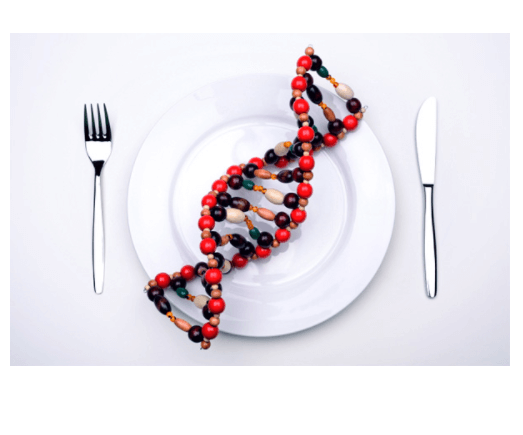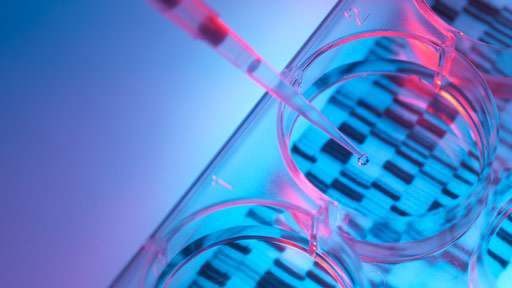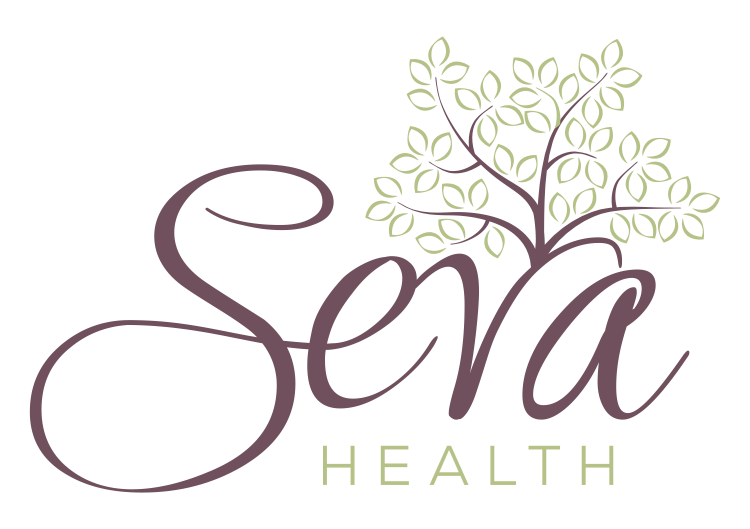
03 Mar Getting Personal: The Nuts & Bolts of Nutrigenomics
Imagine this: you have your annual physical and your doctor tells you that you’re borderline diabetic. She gives you a brochure and says that losing weight and making healthier food choices is the first step towards reversing these numbers. You jump right on it and join the local gym, clear out your kitchen cabinets and start eating everything listed on the brochure. You’re following her recommendations to the letter–counting calories, eliminating carbs, exercising every morning and every night but six months later there’s not a budge on the scale. At your follow up appointment the labs are getting worse and you’re actually gaining weight rather than losing. The next step, she says? Medication. Sound familiar?
Scenarios like this one are quite common and often result in years and years worth of frustration, failed weight loss efforts, and conflicting advice. It is a known fact that every individual responds to diets differently but one-size-fits-all recommendations remain prevalent and it’s one reason why I’ve experienced so many people moving from one healthcare provider to the next hoping to find the right solution only to eventually give up altogether.
What would you say if I told you that there may be a way to figure out the best nutritional and exercise plan based upon your specific genetic makeup? What would you say if I told you that figuring this out may help you lose weight, get better sleep, and feel more energized throughout your day? Sound too good to be true? It isn’t and it’s what makes nutritional science and the growing field of nutrigenomics quite promising.
A Bit Of History: What is Nutrigenomics?
Nutrigenomics is the branch of genetic research that studies the effects of food on human gene expression and is focused on the ways that genetic variations affect an individual’s nutritional environment. Nutrigenomics helps us understand how the gene-diet interaction contributes to disease and impacts our overall health and physical activity patterns. Using molecular technology, nutrigenomic testing identifies how the bioactive compounds in foods alter DNA during transcription (the step when DNA strands are copied) and DNA translation, ultimately affecting the way important regulatory genes are expressed. Nutrigenomics may get us closer to true precision medicine to prevent and treat diet-related chronic health conditions such as diabetes, obesity and autoimmune disorders such as lupus and rheumatoid arthritis.
The field of nutrigenomics is an outgrowth of the Human Genome Project, a scientific study first proposed in 1988 by a special committee of the U.S. National Academy of Sciences, the National Institutes of Health and the Department of Energy.
The main goals of the Human Genome Project were first established in 1988 by a special committee of the U.S. National Academy of Sciences, and later adopted through a detailed series of five-year plans jointly written by the National Institutes of Health and the Department of Energy. The overarching goal of the international research study was “to identify the three billion base pairs that make up human DNA as well as to identify, map and understand the 30,000 – 40,000 genes of the human genome and how they function.” The global study was officially launched in 1990 and was completed in 2003, ironically coinciding with the 50th anniversary of the discovery of human DNA.

A few of the most important facts from the Human Genome Project are:
- There are between 30,000-40,000 genes in the human genome
- Hundreds of genes appear to have originated from bacteria
- There are over 1 million gene variations, called single nucleotide polymorphisms or SNPs.
So, let’s take a time travel back to high school biology class to break this down.
Remember that DNA is the hereditary information found in the nucleus of every human cell. DNA works along with RNA to guide the cell in making new proteins that determine our biological traits such as eye and hair color. DNA gets copied from generation to generation.
The basic building block of DNA is the nucleotide molecule. Nucleotides consist of a sugar (deoxyribose), a phosphate group and a nitrogen base. The four different bases are identified by the first letter in their names: cytosine (C), thymine (T), adenine (A), guanine (G). Each nucleotide contains the sugar (deoxyribose) bound on one side to a phosphate group and on the other side to a nitrogenous base. The order or sequence of these bases, such as CAGT or ACGT is what determines the DNA’s code or instructions.
Still with me? Great. Let’s keep time travelling and put more pieces together.

Strands of DNA are made of the sugar and phosphate portions of the nucleotides, while the middle parts are made of nitrogenous bases. The nitrogenous bases on the strand of the DNA pair together — adenine with thymine (A +T) and cytosine with guanine (C+G) — to create the whole structure which is held together by a hydrogen bond.
SNPs or Single Nucleotide Polyphorphisms are common genetic variations or differences in a single nucleotide. For example, a SNP may be a replacement of the nucleotide thymine (T) with the nucleotide cytosine (C ). SNPs are present in roughly 1 in 1,000 nucleotides which means there can be nearly 5 million SNPs in an individual’s genome. Scientists have created a database of more than 100 million SNPs in populations worldwide and have determined that many are relatively benign. However, some SNPs act as biological markers that may help predict an individual’s risk of developing certain health conditions or diseases, a response (or lack of response) to certain medications or susceptibility to environmental toxins.
SNPs and Nutrigenomic Testing
Understanding the role of genes and specific genetic variations is creating a whole new field of personalized medicine — nutrigenomics and nutrigenetics. Variations in our genetic code can impact how our bodies metabolize the foods we eat and how it utilizes nutrients. Many important bodily functions are regulated by gene expression and variations can impact fat metabolism, insulin production, energy balance, inflammation and appetite. For example, several FTO gene variants suggest a predisposition for obesity. A recent clinical study published in the American Journal of Clinical Nutrition found that individuals with a particular FTO gene variant were more likely to be successful at losing weight through dietary and lifestyle interventions than others who are not carriers of the gene.
Variations may also suggest the need for more or less nutraceutical supplementation or elimination of certain foods altogether. For example, the PPARG gene is the key regulator of lipid (fat) and glucose (sugar) balance and has been implicated in numerous diseases such as diabetes, heart disease and obesity. Some SNPs, such as those affecting the LEPR gene, impact the regulation of body weight through leptin receptors found throughout the body and in the hypothalamus of the brain.
How It Works
Nutrigenomic testing, specifically for identifying gene SNPs, is easy and can be done in less than five minutes. Using a standardized testing kit from a certified lab that specializes in genetics and nutrigenomic testing, your DNA is collected using a simple cheek swab inside the mouth. The swab itself is sent to the certified lab.
Once your specimen is received, DNA is extracted from your swabs and prepared for analysis using state of the art genotyping technology to achieve accurate results. Your results will provide valuable information on your specific gene expression and how those variations impact your heart health, hormone function, mental/emotional health and more. The test will help your healthcare provider’s recommendations for lifestyle modifications that can be used to prevent, mitigate or even provide remedy for a chronic health condition.
 A Promising Future
A Promising Future
No specific test, including gene SNP testing, is a magic bullet for weight loss, disease prevention or disease cure and we should still rely on the basics of what we already know: too much sugar is no good for anyone, a good night’s rest optimizes brain function, and exercise — keeping our bodies moving — will help burn calories, maintain joint flexibility, and boost those feel good endorphins in our brains that make us happy.
The real promise of nutrigenomics is that it helps us know more about our own bodies, our unique molecular ‘fingerprint’ and it offers us a stronger, personalized data point from which to make informed recommendations. By identifying our own unique genetic variations we can customize lifestyle interventions and make more informed choices about food choices, nutritional supplementation, potential medication interactions and exercise routines — saving time, saving money and optimizing our health and well-being.
Are you trying to reverse a borderline health condition like pre-diabetes or hypertension? Want to know more about nutrigenomic testing at Seva Health? Click HERE to schedule your complimentary Vision to Victory session.

Anniece Woods
Posted at 14:07h, 15 AugustExcellent article Sis. You know i think you’re the bomb.com !! Continued success and blessings.
Angel Shannon
Posted at 18:20h, 04 SeptemberThank you so much for reading and for such a wonderful compliment, Anniece! So grateful to serve.